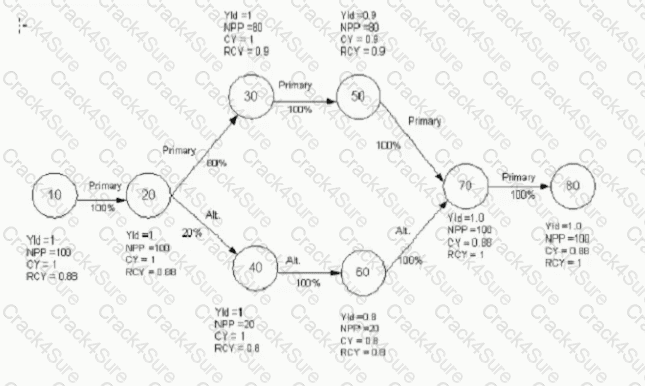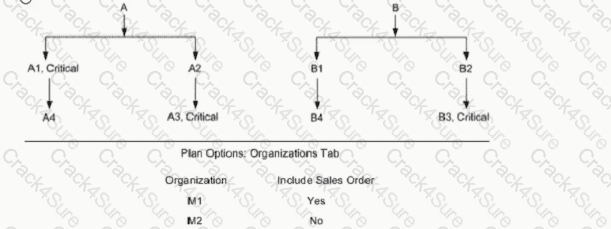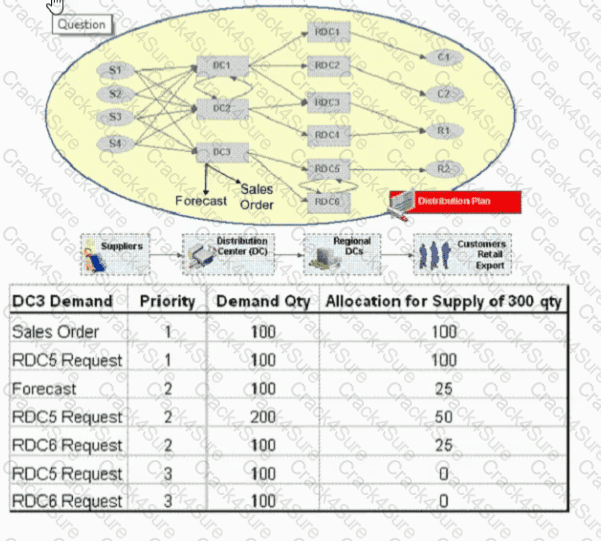We at Crack4sure are committed to giving students who are preparing for the Oracle 1z0-244 Exam the most current and reliable questions . To help people study, we've made some of our Oracle EBS R12: Advanced Supply Chain Planning exam materials available for free to everyone. You can take the Free 1z0-244 Practice Test as many times as you want. The answers to the practice questions are given, and each answer is explained.
You define a Supply Chain Plan of type "Master Plan."
In the main tabbed region of Plan Options, you select Planned Items as "All Planned Items" and select the Include Critical Components check box.
Which three describe the Items In the planned organizations that are selected by the plan?
Your client currently has two manufacturing plants, plants, four Inventory locations, and one distribution center. When doing the future state analysis, the Operations Directory at the client site said that they have expansion plans after the go-live of the current Oracle in Implementation. They plan to add 10 more distribution centers and these can be transfer of goods between any two distribution centers. Each distribution center would need to optimize its inventory level and forecasts will be handled in Demand Planning for better customer satisfaction.
The client IT Manager proposes to use one main inventory Organization to represent all the facilities and use sub inventories to represent the various inventory locations in the manufacturing plant and the distribution center. The future distribution centers can be modeled as subinventories because Oracle allows you to define a large number of subinventories. From the system point of view, It will be easier to maintain and inventory transfers between sub inventor using Move Orders are possible.
Select three correct statements about the above scenario.
Identify the three steps that a planner can perform during Net change Simul-ation On-line planning.
Identify three correct statements about phantom Items?
Exhibit.

In a manufacturing environment where Oracle Shop Floor Management Is used, the production process with Information about Yield (Yld), Net Planning Percent (NPP), Cumulative yield (CY), Reverse Cumulative Yield (RCY) is displayed for a product.
If the order quantity is 100, what is the raw material quantity and resource requirement ASCP will schedule respectively at operation sequence 10?
Exhibit.

You define a Supply Chain plan of type "Manufacturing Plan." In the Plan Options Main tab, you select Planned Items as "Demand schedule items and all sales orders" and select the Include Critical Components check box.
The Exhibit shows Bills of Material for Items A and B. It also shows the settings for the Include Sales Order check box on the Plan Options Organizations tabbed page.
Item A has Demand Schedules and Sales Orders for Organizations Ml and M2. Item B has only Sales Orders for Organizations Ml and M2.
Which three statements are correct in the above plan scenario?
Exhibit.

In the Distribution Network, the RDC5 and RDC6 Regional Distribution Centers source material from the DC3 Central Distribution Center.
The matrix in the Exhibit shows allocation for a supply quantity of 300 In the first allocation bucket.
Which Fair Share Allocation method was applied by the Distribution Plan?
Identify three correct ways to manage Personal and Public Queries In Advanced Supply Chain Planning (ASCP).